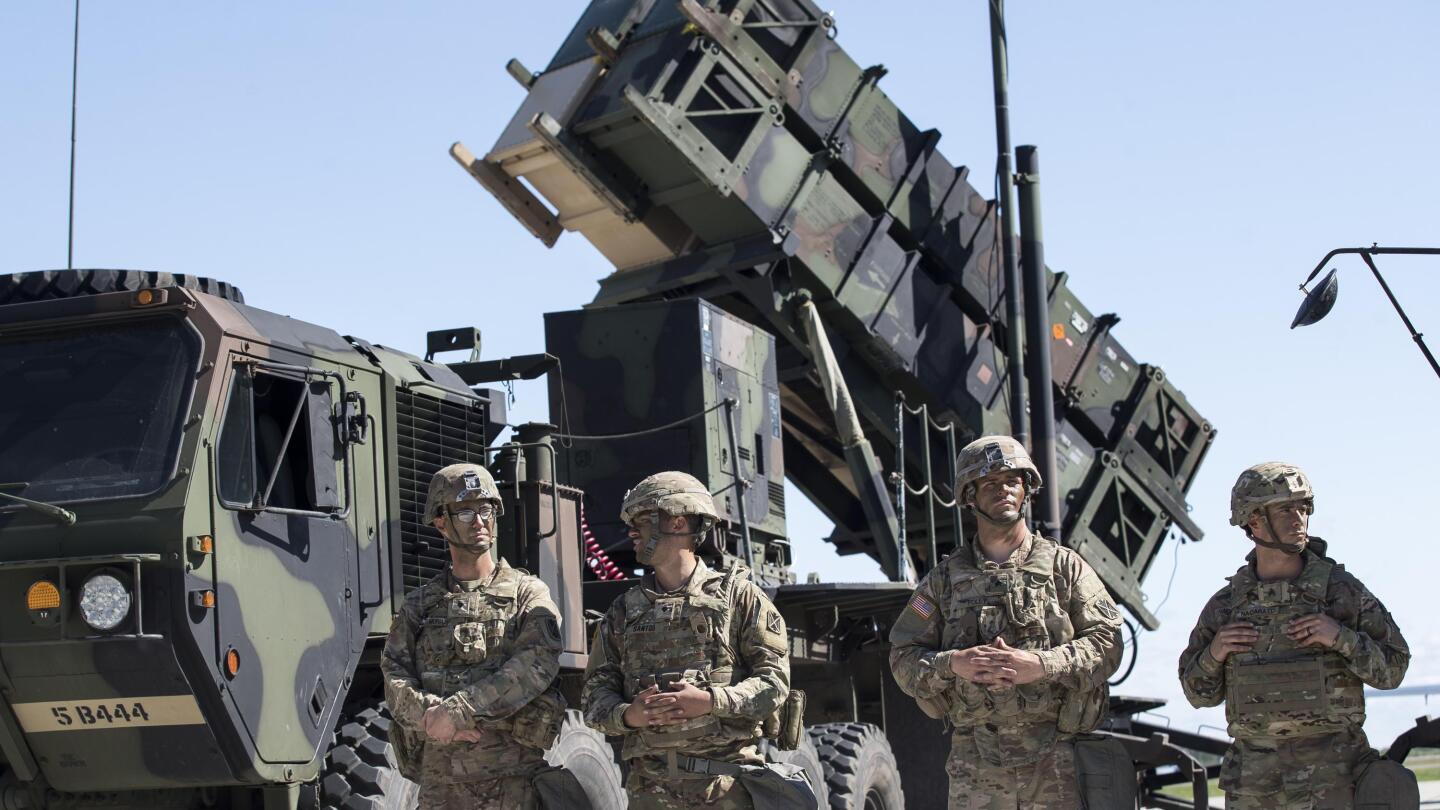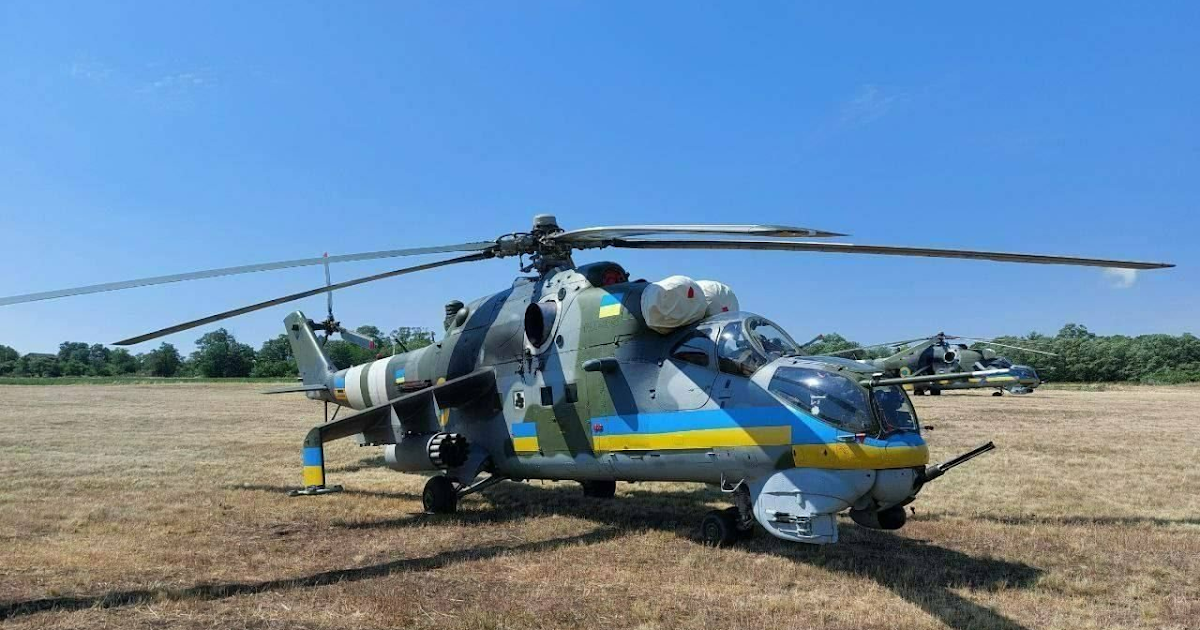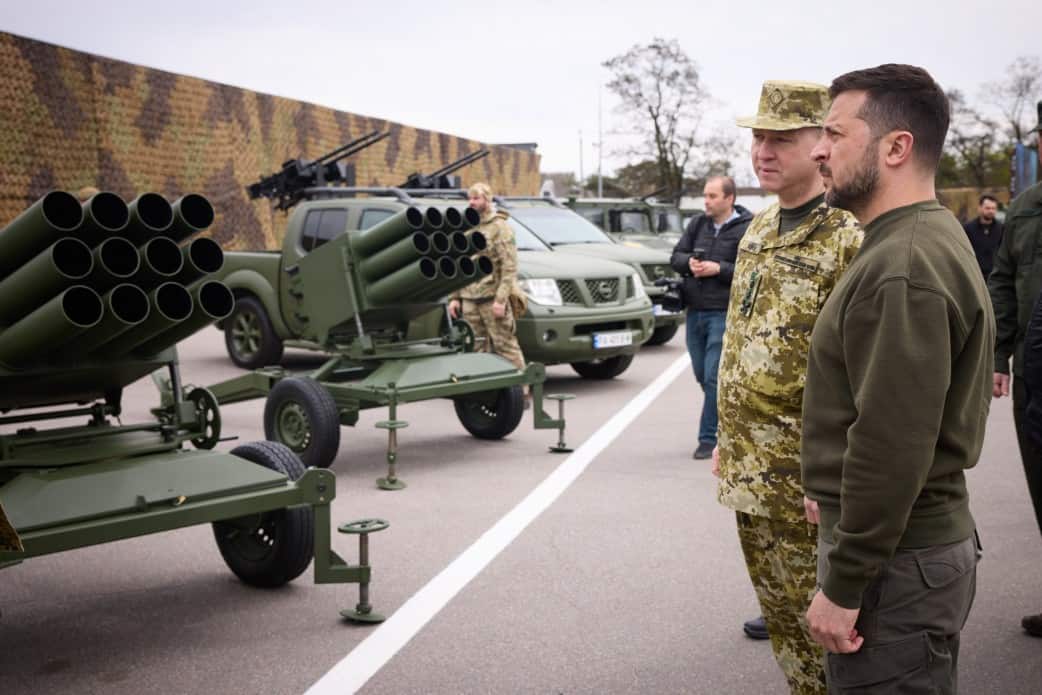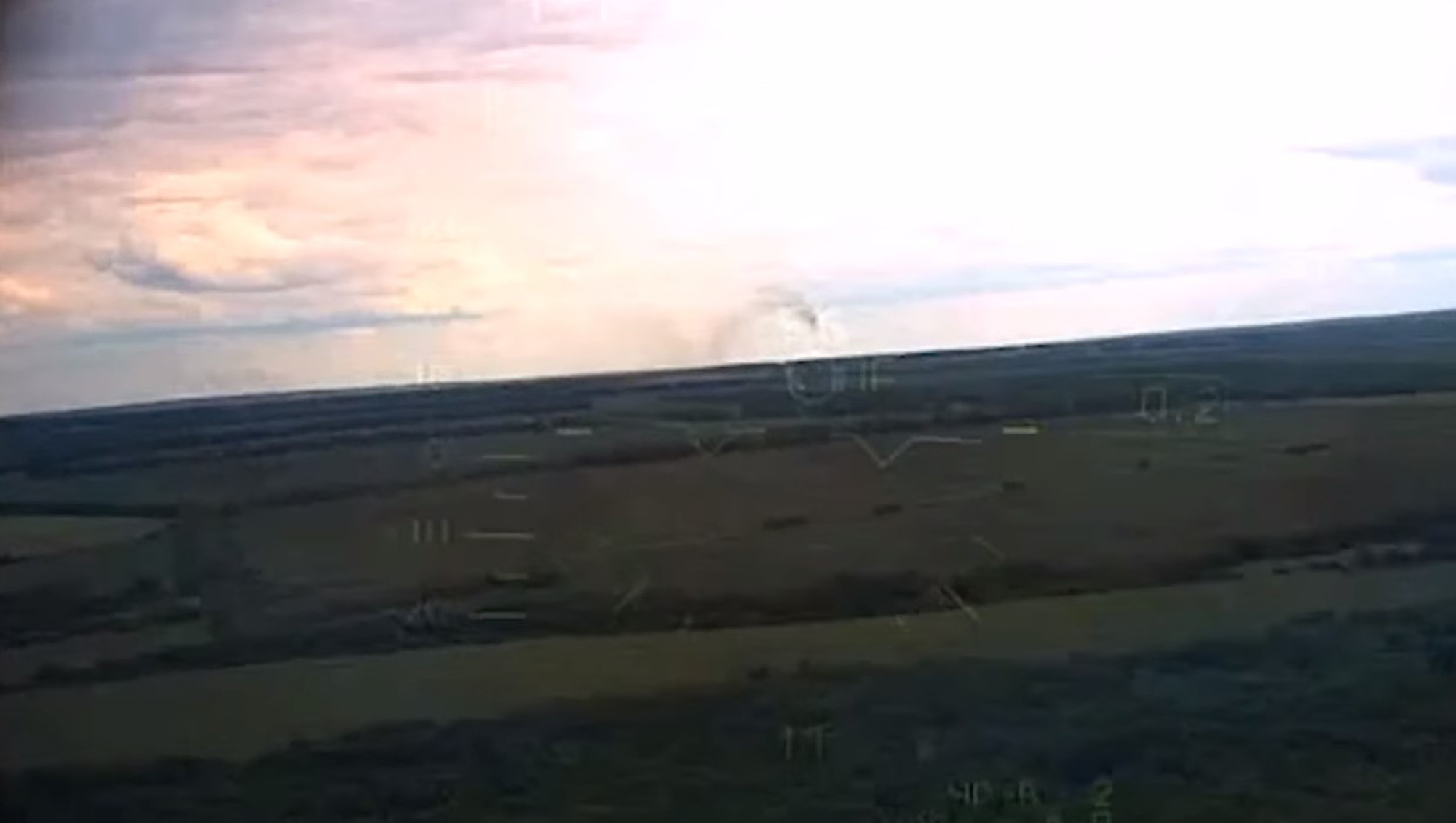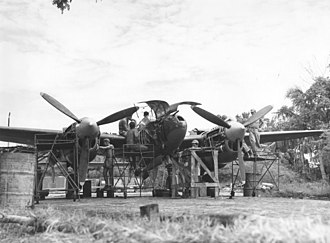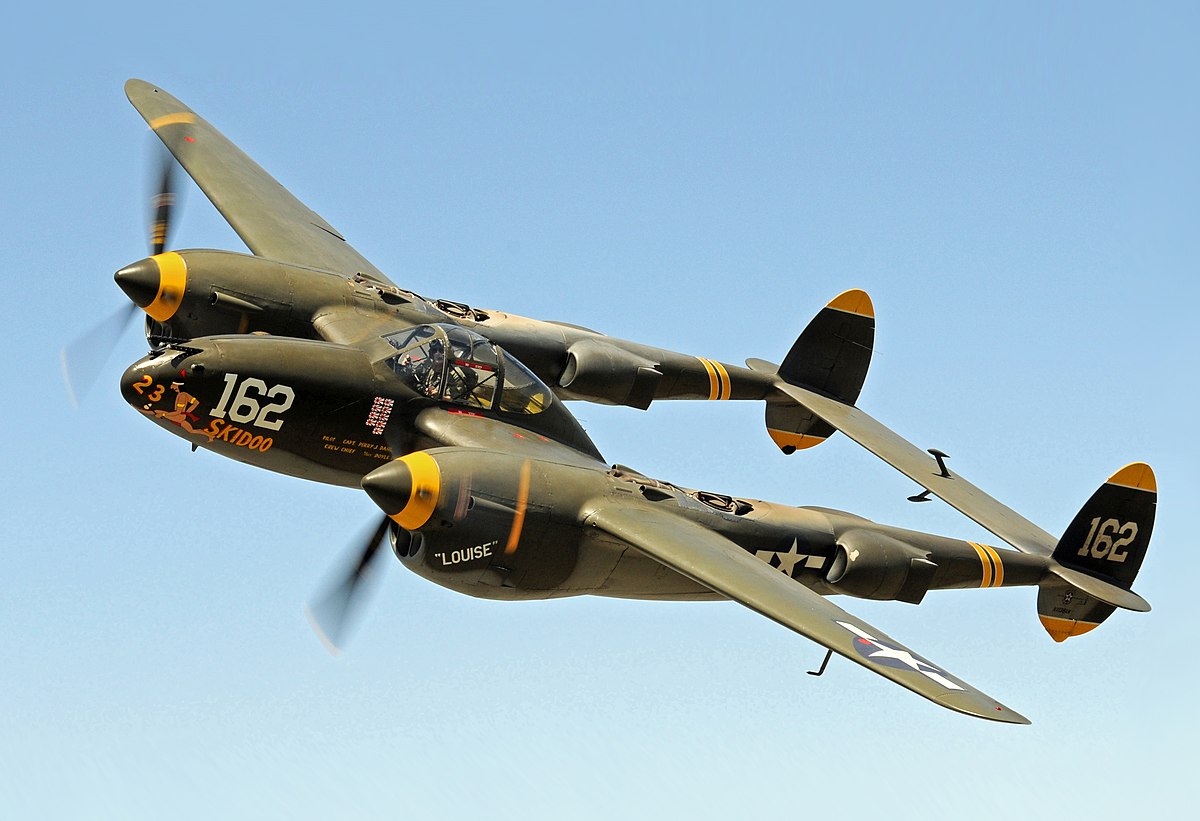Using the Wiki article for a good start point herewith selected excerpts. The Lockheed P-38 Lightning had an interesting and varied career in World War Two and remains unique in appearance, performance, and record for it's time. It's long been one of my most favorite aircraft of WWII and in general.
...
The
Lockheed P-38 Lightning is an American single-seat, twin piston-engined
fighter aircraft that was used during
World War II. Developed for the
United States Army Air Corps (USAAC) by the
Lockheed Corporation, the P-38 incorporated a distinctive
twin-boom design with a central
nacelle containing the
cockpit and armament. Along with its use as a general
fighter, the P-38 was used in various
aerial combat roles, including as a highly effective
fighter-bomber, a
night fighter, and a
long-range escort fighter when equipped with
drop tanks.
[4] The P-38 was also used as a bomber-pathfinder, guiding streams of
medium and
heavy bombers, or even other P-38s equipped with bombs, to their targets.
[5] Used in the
aerial reconnaissance role, the P-38 accounted for 90 percent of the aerial film captured over Europe.
[6] Although it was not designated a
heavy fighter or a
bomber destroyer by the USAAC, the P-38 filled those roles and more; unlike German heavy fighters crewed by two or three airmen, the P-38 with its lone pilot was nimble enough to compete with single-engine fighters.
[7]
The P-38 was used most successfully in the
Pacific Theater of Operations and the
China-Burma-India Theater of Operations as the aircraft of America's top
aces,
Richard Bong (40 victories),
Thomas McGuire (38 victories), and
Charles H. MacDonald (27 victories). In the
South West Pacific theater, the P-38 was the primary long-range fighter of
United States Army Air Forces until the introduction of large numbers of
P-51D Mustangs toward the end of the war.
[8][
page needed] Unusual for an early-war fighter design, both engines were supplemented by
turbosuperchargers, making it one of the earliest
Allied fighters capable of performing well at high altitudes.
[9] The turbosuperchargers also muffled the exhaust, making the P-38's operation relatively quiet.
[10] The Lightning was extremely forgiving in-flight and could be mishandled in many ways, but the
rate of roll in early versions was low relative to other contemporary fighters; this was addressed in later variants with the introduction of hydraulically boosted
ailerons.
[11] The P-38 was the only American fighter aircraft in large-scale production throughout American involvement in the war, from the
Attack on Pearl Harbor to
Victory over Japan Day.
[12]
...
The Lockheed Corporation designed the P-38 in response to a February 1937 specification from the United States Army Air Corps (USAAC). Circular Proposal X-608 was a set of aircraft performance goals authored by
First Lieutenants Benjamin S. Kelsey and
Gordon P. Saville for a twin-engined, high-altitude "interceptor" having "the tactical mission of interception and attack of hostile aircraft at high altitude."
[13] Forty years later, Kelsey explained that Saville and he drew up the specification using the word "interceptor" as a way to bypass the inflexible Army Air Corps requirement for pursuit aircraft to carry no more than 500 lb (230 kg) of armament including ammunition, and to bypass the USAAC restriction of single-seat aircraft to one engine. Kelsey was looking for a minimum of 1,000 lb (450 kg) of armament.
[14] Kelsey and Saville aimed to get a more capable fighter, better at dog fighting and at high-altitude combat. Specifications called for a maximum airspeed of at least 360 mph (580 km/h) at altitude, and a climb to 20,000 ft (6,100 m) within six minutes,
[15] the toughest set of specifications USAAC had ever presented. The unbuilt
Vultee XP1015 was designed to the same requirement, but was not advanced enough to merit further investigation. A similar proposal for a single-engined fighter was issued at the same time, Circular Proposal X-609, in response to which the
Bell P-39 Airacobra was designed.
[16] Both proposals required liquid-cooled
Allison V-1710 engines with turbosuperchargers and gave extra points for
tricycle landing gear.
Lockheed formed a secretive engineering team to implement the project apart from the main factory; this approach later became known as
Skunk Works.
[17][18] The Lockheed design team, under the direction of
Hall Hibbard and
Clarence "Kelly" Johnson, considered a range of twin-engined configurations, including both engines in a central fuselage with push–pull propellers.
[19]
...
The Lockheed design incorporated tricycle undercarriage and a bubble canopy, and featured two 1,000 hp (750 kW) turbosupercharged 12-cylinder Allison V-1710 engines fitted with
counter-rotating propellers to eliminate the effect of engine
torque, with the turbochargers positioned behind the engines, the exhaust side of the units exposed along the dorsal surfaces of the booms.
[27] Counter-rotation was achieved by the use of "handed" engines; the crankshafts of the engines turned in opposite directions, a relatively easy task for
the V-1710 modular-design aircraft powerplant.
The P-38 was the first American fighter to make extensive use of stainless steel and smooth, flush-riveted, butt-jointed aluminum skin panels.
[28][
page needed] It was also the first military airplane to fly faster than 400 mph (640 km/h) in level flight.
[29][30]
[IIRC, the P-38 was the only aircraft of that era with the props spinning in opposite direction to each other. A trained and skilled pilot could turn tighter than any single engine fighter by slight retard one throttle and slightly advance the other, causing the engines/props to swing the aircraft around quicker than the rudders and ailerons. See image below;]
...
Range extension
The strategic bombing proponents within the USAAF, nicknamed the
Bomber Mafia by their ideological opponents, had established in the early 1930s a policy against research to create long-range fighters, which they thought would not be practical; this kind of research was not to compete for bomber resources. Aircraft manufacturers understood that they would not be rewarded if they installed subsystems on their fighters to enable them to carry
drop tanks to provide more fuel for extended range. Lieutenant Kelsey, acting against this policy, risked his career in late 1941 when he convinced Lockheed to incorporate such subsystems in the P-38E model, without putting his request in writing. It is possible that Kelsey was responding to Colonel
George William Goddard's observation that the US sorely needed a high-speed, long-range
photo reconnaissance plane. Along with a
change order specifying some P-38Es be produced with guns replaced by photoreconnaissance cameras, to be designated the F-4-1-LO, Lockheed began working out the problems of drop-tank design and incorporation. After the attack on Pearl Harbor, eventually about 100 P-38Es were sent to a modification center near
Dallas, Texas, or to the new Lockheed assembly plant B-6 (today the
Burbank Airport), to be fitted with four K-17
aerial photography cameras. All of these aircraft were also modified to be able to carry drop tanks. P-38Fs were modified, as well. Every Lightning from the P-38G onward was capable of being fitted with drop tanks straight off the assembly line.
[65]
...
The first unit to receive P-38s was the
1st Fighter Group. After the attack on Pearl Harbor, the unit joined the 14th Pursuit Group in San Diego to provide West Coast defense.
[68]
Entry to the war
The first Lightning to see active service was the F-4 version, a P-38E in which the guns were replaced by four K17 cameras.
[69] They joined the 8th Photographic Squadron in
Australia on 4 April 1942.
[42] Three F-4s were operated by the
Royal Australian Air Force in this theater for a short period beginning in September 1942.
On 29 May 1942, 25 P-38s began operating in the
Aleutian Islands in
Alaska. The fighter's long range made it well-suited to the campaign over the almost 1,200-mile (1,900 km)-long island chain, and it was flown there for the rest of the war. The Aleutians were some of the most rugged environments available for testing the new aircraft under combat conditions. More Lightnings were lost due to severe weather and other conditions than enemy action; cases occurred where Lightning pilots, mesmerized by flying for hours over gray seas under gray skies, simply flew into the water. On 9 August 1942, two P-38Es of the 343rd Fighter Group,
11th Air Force, at the end of a 1,000-mile (1,600 km) long-range patrol, happened upon a pair of Japanese
Kawanishi H6K "Mavis" flying boats and destroyed them,
[42] making them the first Japanese aircraft to be shot down by Lightnings.
...
After the
Battle of Midway, the USAAF began redeploying fighter groups to Britain as part of Operation Bolero and Lightnings of the 1st Fighter Group were flown across the Atlantic via Iceland. On 14 August 1942,
Second Lieutenant Elza Shahan of the 27th Fighter Squadron, and Second Lieutenant Joseph Shaffer of the 33rd Squadron operating out of Iceland shot down a
Focke-Wulf Fw 200 Condor over the Atlantic. Shaffer, flying either a P-40C or a P-39, scored the first hit, causing a fire on the Condor; Shahan in his P-38F finished it off with a high-speed gunnery pass.
[70] This was the first Luftwaffe aircraft destroyed by the USAAF.
[71]
After 347 sorties with no enemy contact, the 1st and 14th Fighter Groups transferred from the UK to the
12th Air Force in North Africa as part of the force being built up for
Operation Torch. The Lightning's long range allowed the pilots to fly their fighters over the
Bay of Biscay, skirting neutral Spain and Portugal to refuel in Morocco. The P-38s were initially based at
Tafaroui Airfield in Algeria alongside
P-40 Warhawks and the rest of the 12th Air Force. P-38s were first involved in North African combat operations on 11 November 1942. The first North African P-38 kill was on 22 November, when Lieutenant Mark Shipman of the 14th downed an Italian airplane with twin engines. Shipman later made two more kills – a
Messerschmitt Bf 109 fighter and a very large
Me 323 Gigant transport.
[72]
Early results in the
Mediterranean Theater of Operations were mixed. Some P-38 pilots scored multiple kills to become aces, while many others were shot down due to inexperience or tactical strictures. Overall, the P-38 suffered its highest losses in the Mediterranean Theater. The primary function of the P-38 in North Africa was to escort bombers,
[73] but the fighters also targeted transport aircraft, and later in the campaign, they were sometimes tasked with ground-attack missions. When tied to bomber-escort duties, the P-38 squadrons were vulnerable to attack from above by German fighters, who selected the most advantageous position and timing. The initial tactical doctrine of the American units was for the P-38s to fly near the bombers at all times rather than to defend aggressively or to fly ahead and clear the airspace for the bombers, and many American pilots were downed because of this limitation. Losses mounted, and all available P-38s in the UK were flown over to North Africa to restore squadron strength.
[72] After this painful experience, the American leadership changed tactics, and in February 1943, the P-38s were given free rein in their battles.
[74]
...
The Mediterranean Theater had the first aerial combat between German fighters and P-38s. German fighter pilot appraisal of the P-38 was mixed. Some observers dismissed the P-38 as an easy kill, while others gave it high praise, a deadly enemy worthy of respect.
Johannes Steinhoff, commander of JG 77 in North Africa, said that the unit's old Bf 109s were "perhaps, a little faster" than the P-38, but a dogfight with the twin-engined fighter was daunting because its turning radius was much smaller, and it could quickly get on the tail of the Bf 109. ...
...
Western Europe
Experiences over Germany had shown a need for long-range escort fighters to protect the
Eighth Air Force's heavy-bomber operations. The P-38Hs of the
55th Fighter Group were transferred to the Eighth in England in September 1943, and were joined by the
20th Fighter Group,
364th Fighter Group, and
479th Fighter Group soon after. P-38s and Spitfires escorted Flying Fortress raids over Europe.
[92]
...
After evaluation tests at Farnborough, the P-38 was kept in fighting service in Europe for a while longer. Although many failings were remedied with the introduction of the P-38J, by September 1944, all but one of the Lightning groups in the Eighth Air Force had converted to the P-51 Mustang. The Eighth Air Force continued to conduct reconnaissance missions using the F-5 variant.
[68]
...
The P-38 was used most extensively and successfully in the Pacific Theater, where it proved more suited, combining exceptional range with the reliability of two engines for long missions over water. The P-38 was used in a variety of roles, especially escorting bombers at altitudes of 18,000–25,000 ft (5,500–7,600 m). The P-38 was credited with destroying more Japanese aircraft than any other USAAF fighter.
[3] Freezing cockpit temperatures were not a problem at low altitude in the tropics. In fact, the cockpit was often too hot since opening a window while in flight caused buffeting by setting up turbulence through the
tailplane. Pilots taking low-altitude assignments often flew stripped down to shorts, tennis shoes, and parachute. While the P-38 could not out-turn the
A6M Zero and most other Japanese fighters when flying below 200 mph (320 km/h), its superior speed coupled with a good rate of climb meant that it could use
energy tactics, making multiple high-speed passes at its target. In addition, its tightly grouped guns were even more deadly to lightly armored Japanese warplanes than to German aircraft. The concentrated, parallel stream of bullets allowed aerial victory at much longer distances than fighters carrying wing guns.
Dick Bong, the United States' highest-scoring World War II air ace (40 victories in P-38s), flew directly at his targets to ensure he hit them, in some cases flying through the debris of his target (and on one occasion colliding with an enemy aircraft, which was claimed as a "probable" victory). The twin Allison engines performed admirably in the Pacific.
General
George C. Kenney, commander of the USAAF
5th Air Force operating in
New Guinea, could not get enough P-38s; they had become his favorite fighter in November 1942 when one squadron, the
39th Fighter Squadron of the 35th Fighter Group, joined his assorted P-39s and P-40s. The Lightnings established local air superiority with their first combat action on 27 December 1942.
[100][101][102][103][104] Kenney sent repeated requests to Arnold for more P-38s, and was rewarded with occasional shipments, but Europe was a higher priority in Washington.
[105] Despite their small force, Lightning pilots began to compete in racking up scores against Japanese aircraft.
...

en.wikipedia.org
